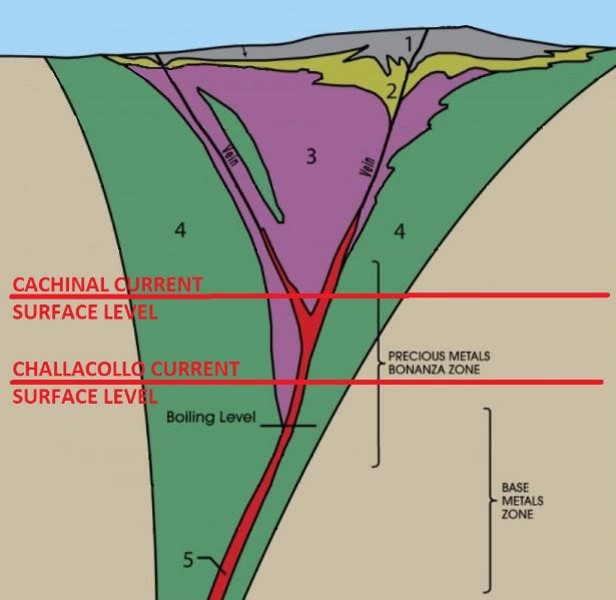Silver-gold mineralization at Challacollo occurs in a series of sub-parallel low sulphidation epithermal quartz veins and brecciated quartz veins / structures. Challacollo is hosted in an Ur Cretaceous volcanic sequence (83-80 Ma) known as the Cerro Challacollo volcanic complex, which consists of dacitic and rhyolitic rocks, interspersed with volcanoclastic rocks, (sandstone and shales).
Towards the north and beyond the extent of the concessions, a Jurassic sedimentary sequence is exposed -siltstones, sandstones, gypsum and fossiliferous limestones- called the Challacollo Formation.
Both sequences are intruded by Ur Cretaceous granitoid bodies, made up mainly of monzodiorites and diorites, cut by andesitic porphyries and monzonitic dikes.
The structures that host the veins / faults strike north-south and give rise to the elevation of Challacollo's hills.
The main mineralization system is hosted by the Lolon Vein, spatially disposed NS/70°-80°W which strikes for about 3.0 km. In the southern part (San Francisco Portal), it changes its spatial disposition to N30°E/70°W. The thickness of this vein can reach up to 25m and depths over 150m.
Towards the west of Lolon Vein, other parallel veins have been discovered: Palermo, Gladys 4, Gladys 1 and Lucy. These were mapped on surface by Silver Standard and Mandalay Resources.

Epithermal Vein Deposit Model – Schematic Relative Position of Cachinal and Challacollo Ag-Au Deposits (modified after Magaw 2010,)

